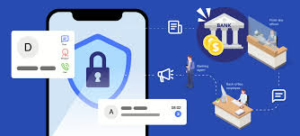This article highlights a sophisticated multi-stage scam targeting individuals in Singapore, involving the impersonation of well-known companies like Shopee, UnionPay, and the Monetary Authority of Singapore (MAS). Let me break down the key details of this scam:
Scam Methodology:

- Initial Contact: Scammers pose as a Shopee employee, claiming the victim signed up for an insurance policy with recurring charges.
- Escalation Tactics:
- Transfer to a “UnionPay representative” who requests personal and banking information.
- Claim that policy cancellation requires fund transfers
- Use WhatsApp screen-sharing to manipulate victims
- Introduce a third scammer posing as an MAS officer alleging money laundering.

Financial Impact:
- At least S$1.4 million lost
- 12 reported cases since January 2025
Prevention Recommendations:
- Never share personal information with unsolicited callers
- Verify suspicious requests through official channels
- Use the ScamShield app to block scam calls/messages
- Set transaction limits on bank accounts
- Activate the Money Lock feature
- Contact the bank immediately if scammed
- Report incidents to police

Key Takeaway: These scammers use sophisticated social engineering techniques, leveraging the names of trusted organizations to appear legitimate. Vigilance and skepticism are crucial in preventing such fraud.

Would you like me to elaborate on any aspect of this scam or discuss general scam prevention strategies?
Social Engineering: Anatomy of Manipulation and Defense
Social Engineering Techniques
Psychological Manipulation Strategies
- Authority Impersonation
- Scammers pose as official representatives (e.g., bank officers, government officials)
- Exploit victims’ respect for authority and tendency to comply with perceived authoritative figures.
- Use official-sounding language, titles, and fabricated credentials.

- Fear and Urgency Tactics
- Create artificial time pressures to prevent critical thinking
- Trigger emotional responses like panic or anxiety
- Common threats include:
- Legal consequences
- Financial penalties
- Account suspension
- Potential criminal investigations

- Trust Building and Rapport
- Develop a seemingly genuine conversational flow
- Use personal details to appear credible
- Gradually escalate requests, starting with minor, seemingly innocuous asks
- Exploit human tendency to be helpful and avoid confrontation

- Information Harvesting
- Collect fragmentary personal information from multiple sources
- Use social media, public databases, and previous data breaches
- Craft highly personalized, convincing narratives
Technical Manipulation Methods
- Phishing Techniques
- Spoofed communication channels
- Lookalike websites and email addresses
- Malicious links and attachments
- Screen sharing and remote access exploitation

- Multi-Stage Scam Progression
- Complex narratives involving multiple fake personas
- Gradual erosion of victim’s skepticism
- Continuous redirection and technical jargon
Prevention Strategies
Personal Awareness and Education

- Critical Thinking Development
- Always verify unsolicited communications independently
- Use official contact methods from verified sources
- Never click links or download attachments from unknown sources
- Recognize and resist emotional manipulation

- Communication Red Flags
- Unsolicited contact requesting personal information
- Pressure to act immediately
- Requests for financial transfers
- Communication via unofficial channels
- Threats or aggressive language

Technical Protective Measures
- Digital Security Practices
- Use multi-factor authentication
- Regularly update software and security systems
- Install reputable antivirus and anti-malware solutions
- Use dedicated communication and banking apps
- Enable transaction notifications

- Information Protection
- Minimize public personal information sharing
- Use privacy settings on social platforms
- Create complex, unique passwords
- Regularly monitor financial statements
- Use virtual credit cards for online transactions

Institutional and Technological Interventions
- Technological Defenses
- Implement AI-driven fraud detection systems
- Develop advanced caller ID and communication verification tools
- Create comprehensive scam reporting mechanisms

- Educational Initiatives
- Regular public awareness campaigns
- School and workplace training programs
- Clear, accessible resources on emerging scam techniques
- Collaborative efforts between government, tech companies, and financial institutions
Psychological Resilience

- Emotional Intelligence
- Recognize personal emotional triggers
- Practice calm, methodical responses to unexpected communications
- Develop healthy skepticism without becoming paranoid
- Community Awareness
- Share scam experiences
- Supporting vulnerable community members
- Create support networks for scam victims
Emerging Trends
- Increasing sophistication of AI in social engineering
- Cross-platform information integration
- More personalized, contextually relevant scam attempts
Conclusion
Social engineering exploits fundamental human psychological vulnerabilities. Comprehensive defense requires a multi-layered approach combining technological solutions, personal awareness, and continuous education.
Maxthon

Maxthon has set out on an ambitious journey aimed at significantly bolstering the security of web applications, fueled by a resolute commitment to safeguarding users and their confidential data. At the heart of this initiative lies a collection of sophisticated encryption protocols, which act as a robust barrier for the information exchanged between individuals and various online services. Every interaction—be it the sharing of passwords or personal information—is protected within these encrypted channels, effectively preventing unauthorised access attempts from intruders.
Maxthon private browser for online privacyThis meticulous emphasis on encryption marks merely the initial phase of Maxthon’s extensive security framework. Acknowledging that cyber threats are constantly evolving, Maxthon adopts a forward-thinking approach to user protection. The browser is engineered to adapt to emerging challenges, incorporating regular updates that promptly address any vulnerabilities that may surface. Users are strongly encouraged to activate automatic updates as part of their cybersecurity regimen, ensuring they can seamlessly take advantage of the latest fixes without any hassle.
In today’s rapidly changing digital environment, Maxthon’s unwavering commitment to ongoing security enhancement signifies not only its responsibility toward users but also its firm dedication to nurturing trust in online engagements. With each new update rolled out, users can navigate the web with peace of mind, assured that their information is continuously safeguarded against ever-emerging threats lurking in cyberspace.
